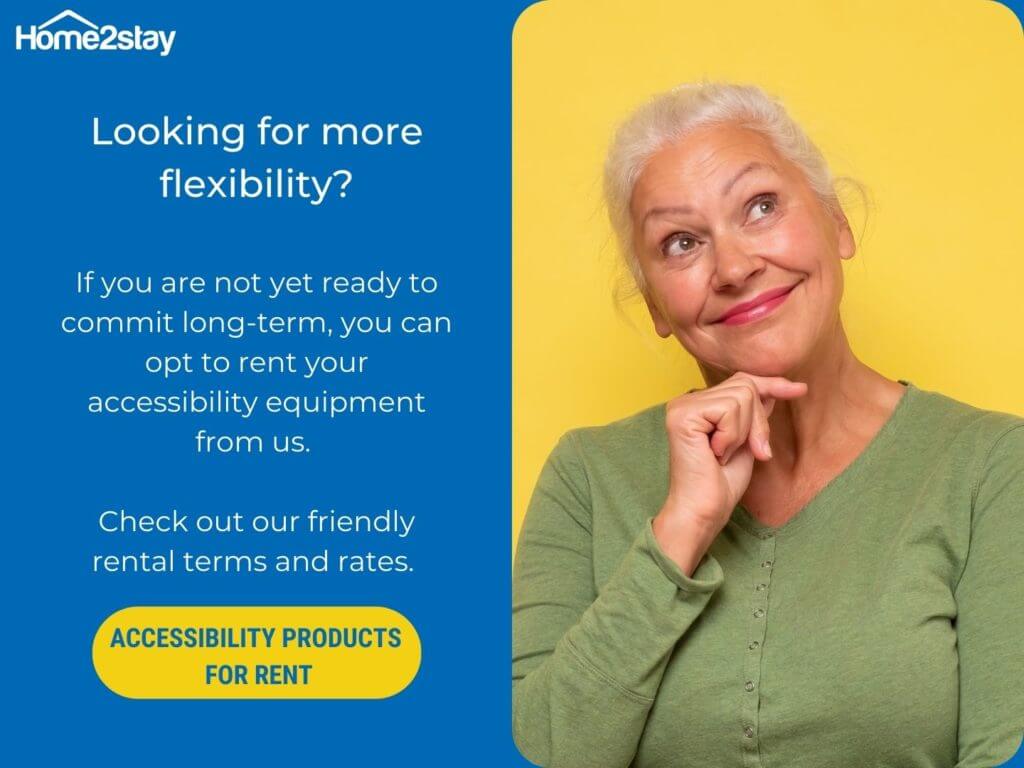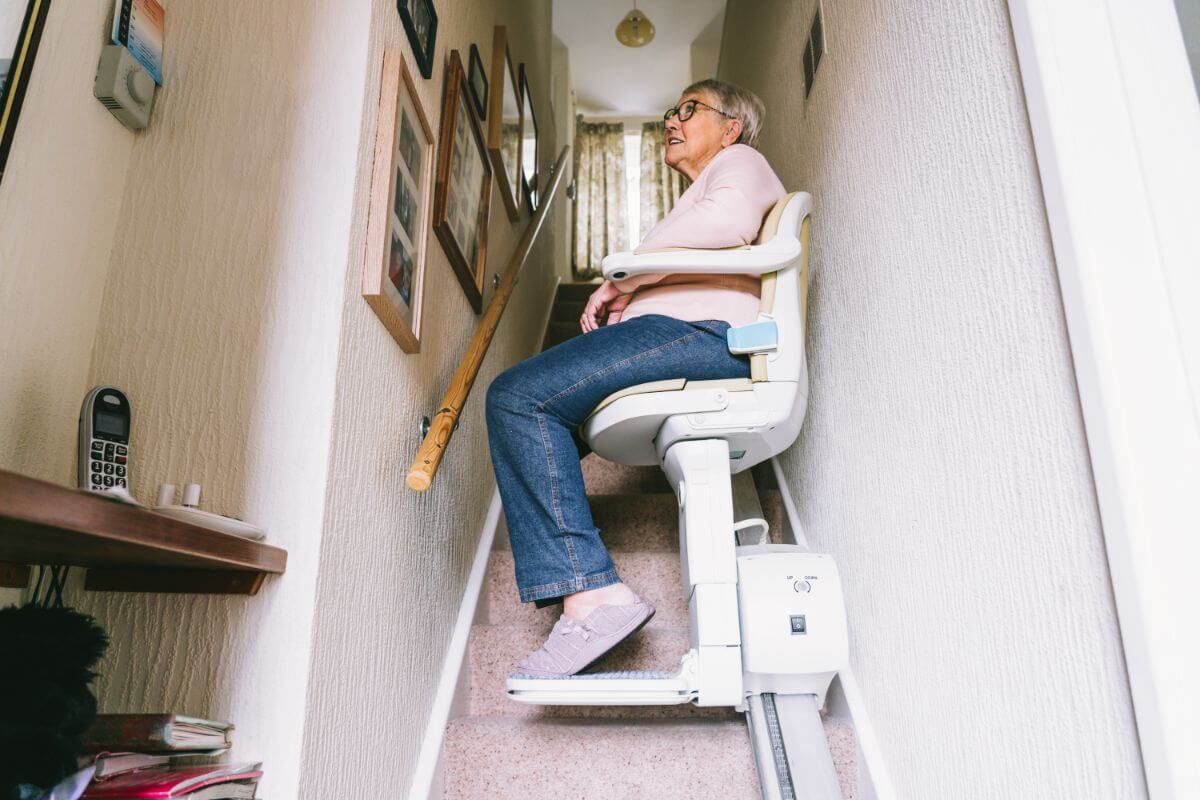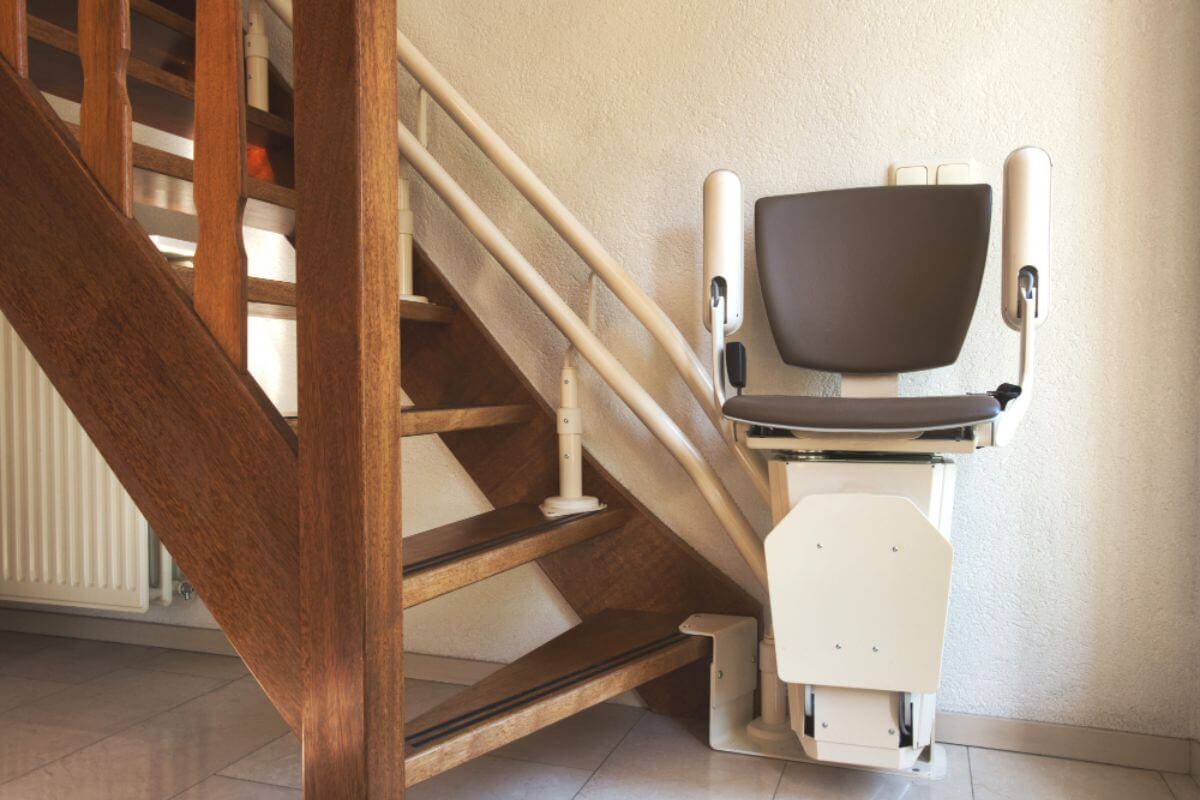Everything You Need to Know About Residential Elevators

Stairs can be one of the biggest safety concerns for people with limited mobility and balance. Climbing up and down the stairs can take a toll on your energy and can be painful on the knees. If you or someone in your household uses a wheelchair or other mobility aids, navigating the stairs with your equipment can be a nightmare.
A residential elevator can be a lifesaver for those who are struggling with the stairs in their home- but is it worth it?
A home lift can be used for various purposes, such as helping seniors or household members with mobility issues go up and down the house conveniently, moving furniture and transporting heavy items across your floors, etc.
However, many are still hesitant to get a home lift installed, mainly due to cost and maintenance issues. How much does a residential elevator cost? What do you need to consider when choosing one? And is it difficult and costly to maintain?
Let’s take a closer look at these questions and more. In this article, we’ll share with you the A-Z of having a home lift installed, so you can make the best decision for your and your family’s needs.
Safety comes first
The most important thing that matters when it comes to residential elevators is that it’s done correctly and safely. There are many different options available, so it’s important to be aware of your choices before installing one in your home or business establishment.
First of all, make sure that you get assistance from a certified distributor/installer of credible brands, such as Bruno and Ram. Even with strict quality control, defects can occur- so it’s crucial that your lift comes with a manufacturer’s and installer’s warranty for the unit and various parts.
You want to transact with a provider that you can rely on- so ensure that the installer has responsive service, after-sales assistance and training on how to use the equipment, and preventive maintenance service.
Don’t be afraid to ask all the questions you have before you purchase, read reviews, and ask your trusted family members and friends for their recommendations.
What is a residential elevator?
Residential elevators, also known as residential lifts, home elevators, or home lifts, are a type of elevator designed for private residential homes, or small commercial buildings.
Compared to full commercial elevators, residential elevators are frequently less complicated or expensive. They usually only service 2–5 levels and are quite small, with an average capacity of 2-4 people. They might feature distinct design characteristics suitable for home aesthetics.
Types of residential elevators
There are four standard types of residential elevators based on what kind of power systems they use, though some minor variations may be seen depending on the model and manufacturer.
- Cable-Driven Elevator
- Chain-Driven Elevator
- Hydraulic Elevator
- Pneumatic Elevator
- Traction Elevator
- Find your trusted accessibility provider
- Consultation and customized quotation
- Secure plans and permits
- Scheduling of installation and actual installation
- Post-installation testing and training
- Home style and design
- Home size and elevator size
- Type of residential elevator
- Add-on features
An elevator that is driven by a cable wrapped around a drum. These elevators are among the most well-known and can have a glass or metal shaft- you’ll generally find them in department stores and low commercial buildings.
The complexity and space requirements of various cable-driven elevator designs vary. Cable-driven lifts with a dedicated shaft need a pit and machine room in addition to the shaft itself to operate, so they are more suitable for new constructions. On the other hand, cable-driven elevators without shafts have a tiny footprint and can be retrofitted into older homes with just a few basic adjustments, such as drilling a hole in the floor for the elevator cab.
Similar to a cable-driven elevator, a chain-driven lift is powered by a chain looped around a drum. The advantages of a chain-driven elevator over a cable-driven elevator are greater durability (needs less upkeep and replacement), and there is no need for a machine room, thus saving space.
These elevators are simpler to retrofit into existing structures because of the decreased space needs, and adding them to newly-constructed properties is still the most cost-effective option.
This type of elevator uses hydraulics propelled by a piston that moves inside a cylinder. The cylinder is connected to a machine that pumps an oil-based fluid to regulate the lift’s motion.
Since the complete power system is contained within the elevator shaft itself, they don’t need separate machine rooms, but they do need a pit to be dug beneath the elevator shaft. Because of their simplicity, they are reasonably easy to retrofit into an existing home. However, the price of digging the elevator pit may change depending on the structure of the current property.
This elevator is powered by a vacuum system inside a tube.
They often have an appealing futuristic design which adds an interesting touch to any home. This lift can be easily retrofitted into an existing home because it is fully vacuum-powered and does not need a pit or machine room.
Traction elevators use the same technology as elevators in business buildings, although they are intended for residential use.
One of the most prominent advantages of a traction elevator is that it runs smoothly and silently. This elevator type lifts the cab from floor to floor using steel belts or ropes. Residential traction elevators work smoothly, use very little energy, and are very simple to maintain. They also do not require a lot of space, making them ideal even for retrofitting into existing homes.
Alternatively, you can also consider a vertical platform lift. Though you might think of an elevator as a fully-enclosed carriage that moves people up and down multiple storeys, a VPL (also called a porch lift) can also work the same way, whether indoors or outdoors.
Compared to the standard residential elevator, a VPL requires less time and financial investment to get installed. Prices start at around $5,700.
However, VPLs are more industrial-looking, and there are not many styling options available with them.
Steps in procuring a home lift
The best first step is to always consult the experts. Get in touch with your trusted local accessibility provider to schedule a home visit for proper consultation and assessment.
Not sure where to look for a provider in your area? You can start by searching online- type “residential elevator provider near me” or “residential elevator + your city”. Check out reviews on Google, Yelp, Facebook, Better Business Bureau (BBB), etc. Find out if the business is BBB-accredited, certified by the National Mobility Equipment Dealers Association (NMEDA), or part of other credible associations.
You can also get recommendations from your family, friends, healthcare professionals, and other residents in your area.
During an in-home consultation (ideally free), a home accessibility specialist will assess your space to learn more about your family’s needs and determine the best solution for your home.
After which comes the customized quote- which you have to make sure to get in writing- this is for your protection and will help you avoid misunderstandings in the future.
Always keep a copy of the contract/quote signed by both parties and ensure that any revisions are also documented in writing and counter-signed by yourself and the installer.
Every construction project needs the right paperwork, and experienced home accessibility equipment providers will be able to assist and point you in the right direction on where to apply for the necessary permits.
Do not be tempted to skip this step- it might sound like a hassle now, but guaranteeing that all work is done legally can save you a lot of headaches later on. This can also ensure that your home insurance remains intact.
The next step is the construction, which will be scheduled, based on the installer’s availability and your preference.
Once you agree on a date, work on-site preparation can now start. A team of professional workers will start the construction and installation process in your home based on the plans agreed upon during the consultation stage.
Refer often to the signed contract to be sure that all details are covered.
A good service provider will always make sure to update you at every stage of the process.
The procedure is only complete once the professionals have thoroughly tested your elevator to ensure its safety systems and circuits adhere to its safety standards. You and your family members are then trained on how to use it.
Make sure to file copies of your warranties properly.
You may also want to consider booking your first maintenance check in advance, to ensure that you don’t miss out on it.

Factors that determine the cost of residential lifts
Installation of home lifts typically costs between $25,000 to $45,000.
It is quite difficult to give an exact figure, given that each home lift must be specifically tailored and built for each home and several factors will determine the final cost:
The procedure of installing a home elevator might change depending on a few variables, including the layout of the house, your preferences, and the age of your living space.
If you’re still in the process of building your space, you can ask the contractor to include an elevator in the blueprint. On the other hand, a residential elevator can be added in an older or existing home with the proper retrofitting.
Check if your space has been built with an elevator installation in mind- some architects and home builders stack closets, which means that they are constructed one on top of the other on each floor of the house. Typically, the closets are the same size as a home elevator shaft. Additionally, they have temporary flooring, lights, plugs, and other suitable connections that will make retrofitting a residential elevator much easier.
Retrofitting a residential elevator in an older house will probably cost more money compared to installing a home lift in a more modern home because it tends to require more work – such as removing walls or partitions, digging concrete, and preventing damage to the structure of your property.
To determine the ideal location and setup for an elevator in your home, it’s best to schedule a consultation with your trusted professional accessibility provider. They will learn about your specific requirements and work with you to determine the best solution.
If you need a larger elevator to accommodate more people or if your home has more than two stories, then you will also need to shell out more money.
Standard home elevators typically can fit 2 to 5 people only and cannot go beyond two stops. If you need anything beyond these, such as a larger cabin that can accommodate more people or additional stops on top of two floors, that will entail more costs and a bigger space requirement.
Each additional stop on a home lift typically increases costs by about $10,000.
Installing a cable-driven elevator in a new construction normally costs around $25,000, which is at the lower end of the price range. On the other hand, retrofitting the elevator shaft for a cable-driven elevator into an existing property can call for a lot of construction, such as tearing down walls and excavating concrete, which results in a significantly higher price, estimated to be at the $45,000 to $80,000 range.
This is why choosing a hydraulic elevator, pneumatic elevator, or traction elevator when you are retrofitting into an existing property often makes more sense. They take up significantly less room and may be installed almost anywhere in the house because they don’t need separate machine rooms (some don’t even need shafts or pits).
The arrangement of your home may allow you to install these kinds of elevators within a closet, but more often than not, they will be put in a room’s corner where they will be seen. The advantage of these hydraulic, pneumatic, or traction elevators is that they can be retrofitted into an existing home for only about $25,000 to $35,000 on average.
How technologically-advanced your home elevator is will also affect the overall cost. Basic designs and functions cost less, while those with the newest technology will cost more in terms of the initial investment. However, going with the newer models may eventually be more cost-efficient, as you can use them for a longer period of time.
Like any other equipment, there are extra features that you can avail of to customize your home elevator to your liking.
Elevator gate style
Today’s residential elevator market offers fashionable add-ons to ensure that your lift matches your preferred style and aesthetics.
If the standard gate style does not appeal to you, because you think it makes your home look too institutional, you can opt for customized designs and materials, such as glass, wooden/carved style, etc.
A more affordable option for customizing your elevator gate is to simply have it painted in color(s) that will complement your home’s interior color. There are hundreds of colors to choose from, so you’ll surely find one that will match your style.
The interior design of the cabin
You can select from a variety of cabin designs, interior finishes, ceiling options, handrail types, and fixture arrangements. You can customize these interior details to your liking, but of course, this means additional costs.
A professional provider will work with you to plan out the look and styling of your elevator car before installation is done. If your budget allows it, it’s best to choose a timeless style that suits your taste, since you expect to use your home lift for at least 20 years.
Two-way phone system
An elevator emergency phone, commonly known as a two-way communication device, is another option you can consider if you want an additional safety feature in your residential lift.
You may need this add-on when you want to avoid elevator entrapment accidents or simply when you need to speak urgently to a housemate while you are in the lift.
The cost of having a two-way phone system installed in your residential lift normally starts at $368.
Back-up battery system
A battery backup system lets you fully use all elevator functions even if there is a power outage.
This will allow you to have a continuous power source even while the main power is down, for up to 30 and even 40 cycles.
This option will typically cost you around $3,675 and up.
Conclusion
A residential elevator can be a great and functional addition to your living space. It can help you save time and make accessing areas in or around your home easier. However, it does come with pros and cons, thus it is important you weigh in on all these factors before you make this very important decision.
Installing a residential elevator requires a significant amount of investment, so it’s important to do your research beforehand about the different types, additional costs, and financing options available to you.
The main benefit of a home lift is you no longer have to worry about yourself or your family members falling down the stairs. Ask yourself: How much are you willing to invest to keep yourself and your loved ones safe in your space?
Many companies offer this accessibility equipment, but not all have the same amount of experience or expertise in this field. Home2stay is a certified distributor and installer of RAM and Bruno elevators and lifts with almost a decade of experience. If you are considering your options for navigating through your stairs safely and comfortably, book an assessment with us- it’s FREE.






Leave a Comment
We'd Love to Hear Your Thoughts Got something to say? We're all ears! Leave your comments below and let us know what you think. Your feedback helps us improve and serve you better. Can't wait to hear from you!